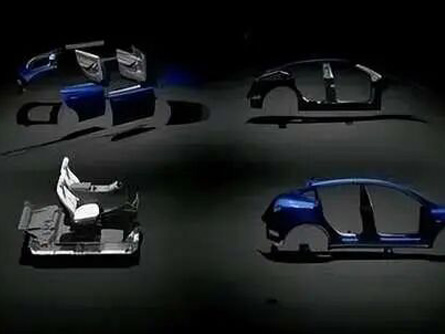The Weight Challenge of NEVs: Lightweighting is Imperative
The transition from traditional fuel vehicles to new energy vehicles (NEVs) has brought fundamental changes to power systems. However, the addition of the "three-electric" systems (battery, motor, and electronic control) has significantly increased vehicle weight. Industry research indicates that NEVs are 5%-25% heavier than conventional vehicles due to battery packs and high-voltage components. For example, the three-electric systems alone can add 200-300kg of extra weight to a comparable model, equivalent to the total mass of a traditional fuel vehicle at full load. This not only reduces driving range (a 10% increase in weight raises energy consumption by 5%-6%) but also poses challenges to handling, braking performance, and component durability.

To address weight gain, lightweighting requires breakthroughs in both material innovation and structural optimization. Kleber combines high-performance adhesives with lightweight non-metallic materials to help automakers achieve weight reduction goals while ensuring safety. By replacing traditional welding/riveting processes with low-density composite bonding solutions, vehicle body and component weights can be effectively reduced, while assembly processes are simplified.
Intelligent Thermal Management: A Comprehensive Upgrade from Components to Systems
The rise of NEV intelligence has led to a surge in electronic components, from on-board controllers to sensors and power modules. High-density integrated designs have complicated thermal management requirements. Data shows that the thermal management system in an NEV costs RMB 6,980–7,980 per vehicle, three times higher than in traditional fuel vehicles. Continuous high-load operation of batteries, motors, and electronic control systems demands materials with high thermal conductivity, temperature resistance, vibration resistance, and EMI shielding capabilities.
Kleber's One-Stop Solution: Full-Scenario Empowerment from Lightweighting to Intelligence
Kleber focuses on "material innovation plus system integration" to provide NEVs with comprehensive bonding solutions covering lightweighting, thermal management, and electromagnetic protection:

Lightweight Bonding: Structural adhesives replace traditional metal joining processes, reducing welding points while supporting carbon fiber, aluminum alloy, and other lightweight materials. For example,
KB-XBOND AA107 Acrylic Adhesive: Excellent bonding strength for metals (18MPa shear strength on aluminum substrate @ 25°C; 7.0N/mm T-peel strength); Room-temperature curing.
KB-XBOND AA230: Optimized for aluminum alloy hem flange bonding.
KB-XBOND UA407: Ideal for composites like FRP and SMC.
KB-XBOND AA510: Designed for thin sheet bonding.
Kleber’s full-scenario adhesive portfolio provides reliable "material bonds" for lightweighting.
Thermal Management Integration: Combined with thermal management components such as liquid cooling plates and electronic expansion valves, thermal interface materials and sealing solutions are provided to support highly integrated design.
For example:
KB-XERM AA1003 Series: Two-component thermal adhesive with 1W/m·K conductivity, flame-retardant, and room-temperature curing properties (no primer required) ensure stability for controllers under high loads.
Intelligent Protection: Conductive foam and potting adhesives ensure stable operation of electronic systems in complex electromagnetic environments. Examples include:
KB-XERM EP1360/D25: Tailored for heat pipe radiator cooling.
Kleber’s thermal potting adhesives also address heat dissipation challenges in 800V high-voltage charging platforms, enabling efficient charging while ensuring safety. Its thermal gels are widely used in battery management systems, serving as "invisible guardians."
Kleber's Future: Driving NEV Innovation Through Material Science
As NEVs penetrate mid-to-high-end markets, lightweighting and thermal management requirements will escalate. Leveraging a decade of experience, Kleber continues to advance its acrylic, polyurethane, epoxy, and silicone material systems. Collaborating with automakers and suppliers, it promotes material database development and standardization. At the 2024 Shanghai International Energy Storage Exhibition, Kleber showcased integrated thermal management-bonding-shielding solutions for battery systems, marking its transition from a "single-material supplier" to a "system solution provider."
The future of NEVs lies in the deep integration of lightweighting and intelligence. With innovative adhesive technologies, Kleber empowers automakers to leapfrog in performance and seize opportunities in the "lighter, smarter" era.

